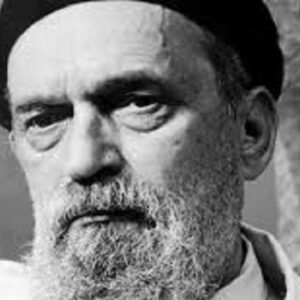Ivan Metrovi was a Croatian architect and sculptor whose work established him as one of the twentieth century’s most prominent artists. He rose from poor origins in the little village of Vrpolje to study at Vienna’s famed Academy of Fine Arts. Here, he honed his innate aptitude and enthusiasm for stone carving into a well-polished skill. His first internationally recognized sculpture, ‘Well of Life,’ was created in 1905. Almost all of his works are influenced by his Croatian upbringing. His early works were influenced by Croatian folk heroes as well as the Croatian people’s struggles against oppressors throughout history. Following World War I, Metrovi began to be influenced by religion. Michelangelo’s masterpieces captivated him, and the effect may be seen in his later works. Metrovi spent his later years in the United States as a citizen. He taught painting at Syracuse University and the University of Notre Dame, among other places. Before his death, Metrovi vowed that his whole Croatian fortune would be handed to the Croatian people. There were nearly 400 sculptures and drawings in total. He will go down in Croatian history as one of the most significant people.’
Childhood and Adolescence
Ivan Metrovi was born in Slavonia, Austria-Hungary, which is now part of Croatia, on August 15, 1883. In the little village of Vrpolje, he was born to peasant farmers.
He was raised in Otavice, where his father was the only person in the hamlet who could read. His family was deeply religious, and his sculptures reflected this.
He began his first apprenticeship as a marble cutter when he was thirteen years old, in 1896.
Pavle Bilinic, a master stone cutter from Split, received the attention of his talent in 1899. As an apprentice, he took the sixteen-year-old lad under his wing. Bilinic’s wife was a high school teacher, and he substantially improved his talents under the guidance of the husband-wife team. The study of city architecture by Metrovi helped him hone his skills.
Metrovi was accepted into the Vienna Academy of Fine Arts shortly after beginning his apprenticeship. Until 1904, he was a student here.
Career of Ivan Meštrović
With the Vienna Sezession exhibition in 1905, he began displaying his work.
In 1906, he capitalized on this momentum by exhibiting his art at the Austrian Exhibition at Earl’s Court in London.
He went to Paris, France, in 1908. During his time in France, he formed a friendship with Auguste Rodin, a well-known French sculptor.
During his time in France, he created approximately 50 sculptures. Many of his works were heavily influenced by local Croatian folklore and brought him international acclaim.
He traveled to Rome in 1911 to study old Greco-Roman sculptures for four years.
Metrovi moved to the newly established Kingdom of Serbs, Croats, and Slovenes after the First World War. He settled in Zagreb and was named director of the Zagreb Art Institute.
In Kosovo, he constructed a tomb for the Rai family as well as a series of military monuments in 1923. These memorials commemorated a 1389 fight against the Turks.
In 1924, Metrovi traveled to Brooklyn to show his work. In 1925, he also visited Chicago.
He traveled to Palestine and Egypt in 1927 to exhibit his paintings. In the same year, he joined a competition to design the fledgling Irish Free State’s coinage.
He was persecuted politically by the new Croatian government in 1941. By going to Rome, he was able to avoid additional conflict. He worked at the Pontifical Croatian College of St. Jerome under the auspices of Dominik Mandic throughout his tenure here.
He moved to the United States in 1946. He was offered a post as an art professor at Syracuse University.
He contributed to ‘Hrvatska revija,’ a journal for Croatian emigrants, multiple times in the 1950s. His full memoirs would be published subsequently in the journal.
He was hired as a professor of fine arts at the University of Notre Dame in 1955.
Major Projects of Ivan Meštrović
Metrovi’s first major piece was the sculpture ‘Well of Life,’ which he displayed in 1905. The art depicts multiple people contorting their bodies over a well, which represents the suffering his native people endured at the time.
His bust of Nikola Tesla was another of his significant achievements. Its importance stems from the fact that it is the most well-known work of art associated with this eminent scientist.
Achievements & Awards
In 1953, he received the gold medal from the American Academy of Arts and Letters for sculpture.
Personal History and Legacy
In 1904, Metrovi married his first wife, Ruza Klein.
In 1922, he married his second wife, Olga Kesteranek. Marta, Tvrtko, Maria, and Mate were the couple’s four children.
He was preceded in death by two of his children. Marta, his 24-year-old daughter, died in 1949, and Tvrtko, his 39-year-old son, died in 1961.
Metrovi died on January 16, 1962, in South Bend, Indiana, at the age of 78.
Metrovi was the first artist to hold a solo show at London’s Victoria & Albert Museum, which took place in 1915.
He was also the first artist whose work was displayed in the Metropolitan Museum of Art while he was still alive.
Nikola Tesla, a well-known scientist, was a close friend of his.
Estimated net worth
The estimated net worth of Ivan Meštrović is unknown.


